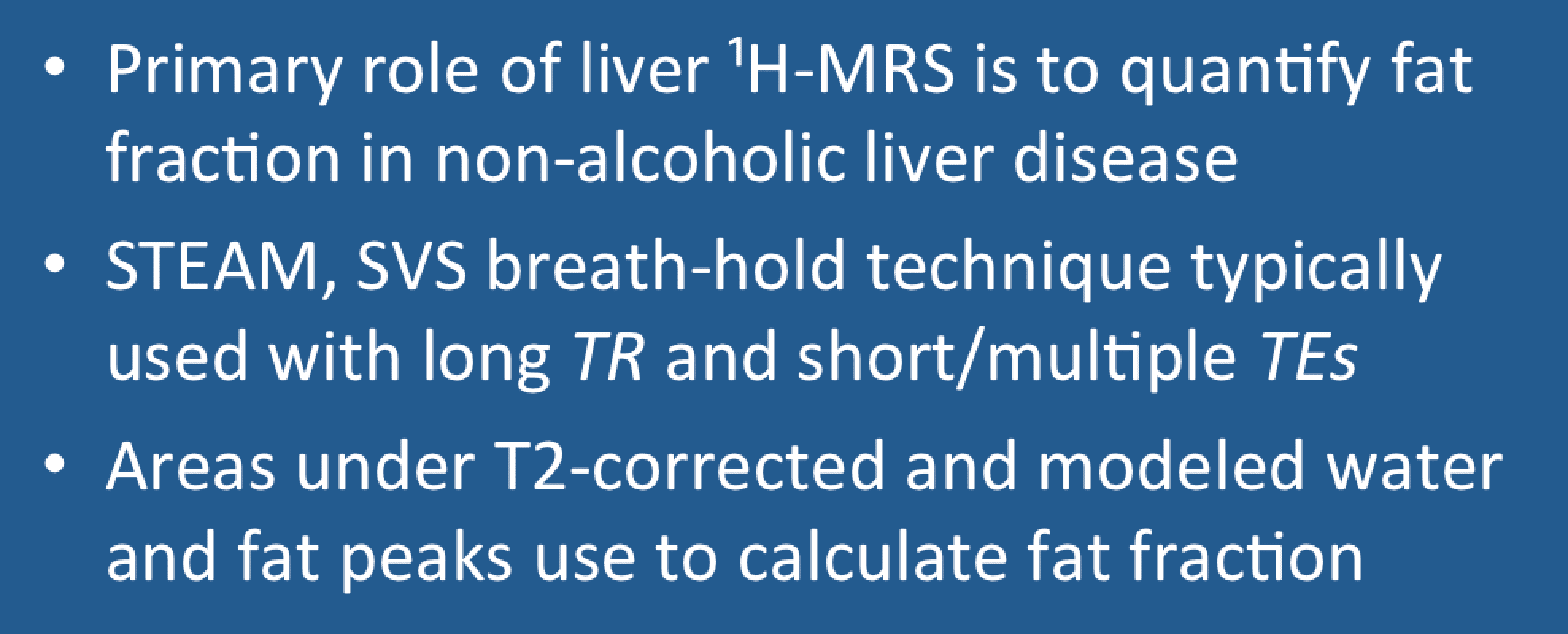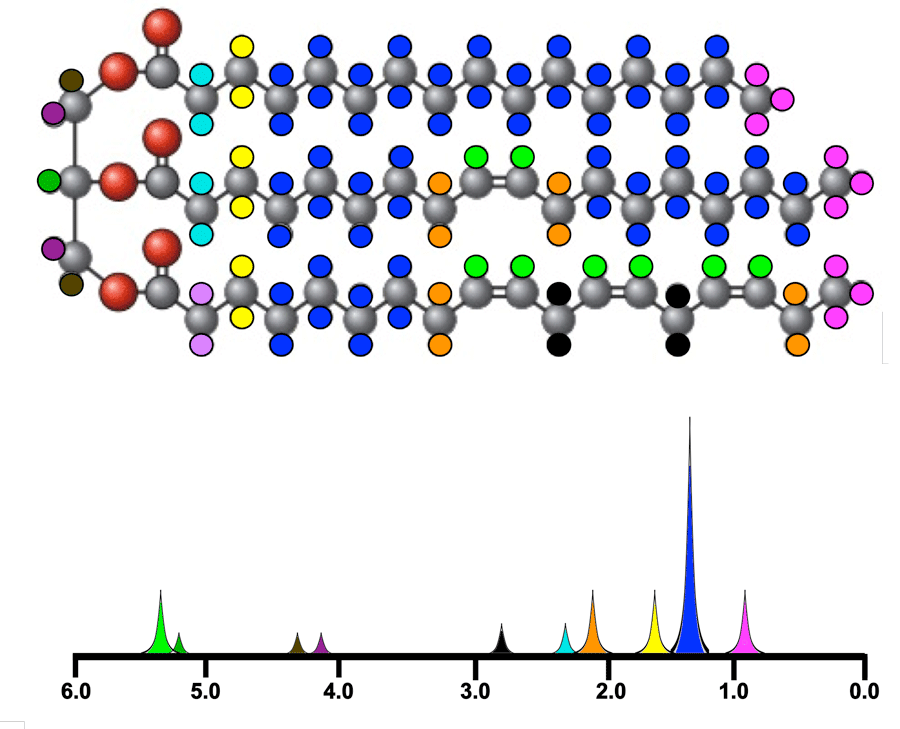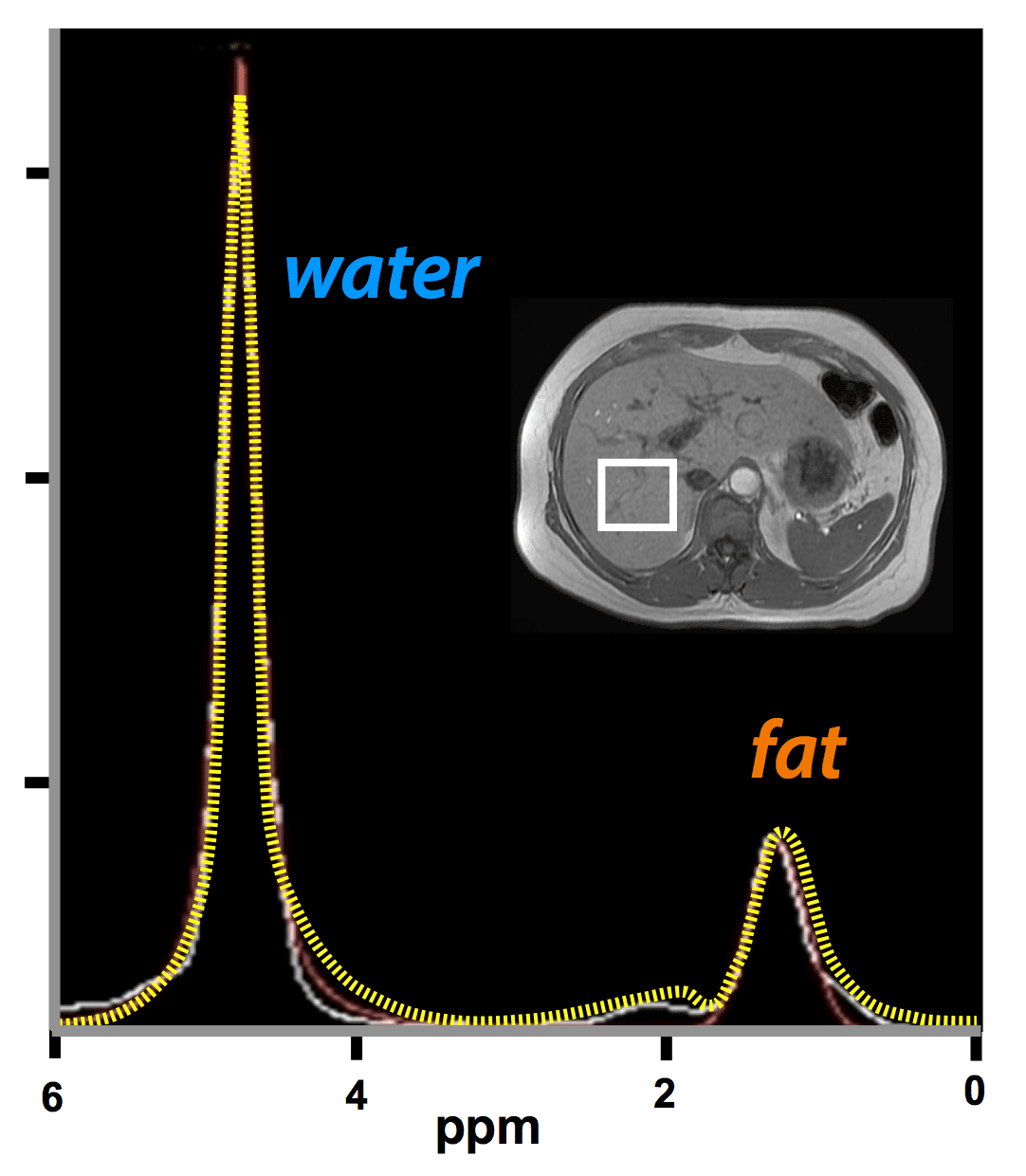The liver is a large, heterogenous organ that moves with respiration, making MR spectroscopy particuarly challenging. ³¹P MRS has long been used to study liver energy stores, but ¹H MRS has gained more recent attention for its potential to understand fat deposition during our modern "epidemic" of obesity and diabetes. A basic goal is to use MRS to quantify hepatic fat fraction non-invasively. Most of this fat is stored as intrahepatic triglycerides (IHTG), whose representative chemical structure and spectral peaks are illustrated below.
To avoid respiratory motion artifacts, single-voxel acquisition during breath holding is preferred. A voxel is typically placed over the right lobe of the liver, avoiding larger vessels, bile ducts, and obvious masses. The STEAM technique is preferred over PRESS because it is less sensitive to J-coupling effects and provides more accurate estimate of fat fraction. Neither fat nor water suppression pulses are used. TR should be breater than 3000 ms to minimize T1 relaxation effects. Multi-echo acquisition with different TEs allows correction for T2 relaxation effects.
The hepatic fat fraction can be estimated as (AF)/(AF+AW), where AF and AW are the areas on the T2-corrected fat and water peaks.
Advanced Discussion (show/hide)»
No supplementary material yet. Check back soon!
References
Hamilton G, Middleton MS, Bydder M, et al. Effect of PRESS and STEAM sequences on magnetic resonance spectroscopic liver fat quantification. J Magn Reson Imaging 2009; 30:145-152.
Lee SS, Park SH. Radiologic evaluation of nonalcoholic fatty liver disease. World J Gastroenterol 2014; 20:7392-7402. (Good review of all modalities, including ultrasound, CT, MRI, MRS, and elastography)
Meisamy S, Hines CD, Hamilton G, et al. Quantification of hepatic steatosis with T1-independent, T2-corrected MR imaging with spectral modeling of fat: blinded comparison with MR spectroscopy. Radiology 2011; 258: 767-775.
Sobol WT, Elster AD, Hinson WH, Chwals WJ. Broad line quantitative chemical shift spectroscopy. Med Phys 1992; 19:61-69. (Use of MRS to quantify total body fat and water using a giant voxel)
Hamilton G, Middleton MS, Bydder M, et al. Effect of PRESS and STEAM sequences on magnetic resonance spectroscopic liver fat quantification. J Magn Reson Imaging 2009; 30:145-152.
Lee SS, Park SH. Radiologic evaluation of nonalcoholic fatty liver disease. World J Gastroenterol 2014; 20:7392-7402. (Good review of all modalities, including ultrasound, CT, MRI, MRS, and elastography)
Meisamy S, Hines CD, Hamilton G, et al. Quantification of hepatic steatosis with T1-independent, T2-corrected MR imaging with spectral modeling of fat: blinded comparison with MR spectroscopy. Radiology 2011; 258: 767-775.
Sobol WT, Elster AD, Hinson WH, Chwals WJ. Broad line quantitative chemical shift spectroscopy. Med Phys 1992; 19:61-69. (Use of MRS to quantify total body fat and water using a giant voxel)
Related Questions
What is meant by in-phase vs out-of-phase imaging?
How does the STEAM method for MR Spectroscopy work and when should it be used?
What is meant by in-phase vs out-of-phase imaging?
How does the STEAM method for MR Spectroscopy work and when should it be used?


